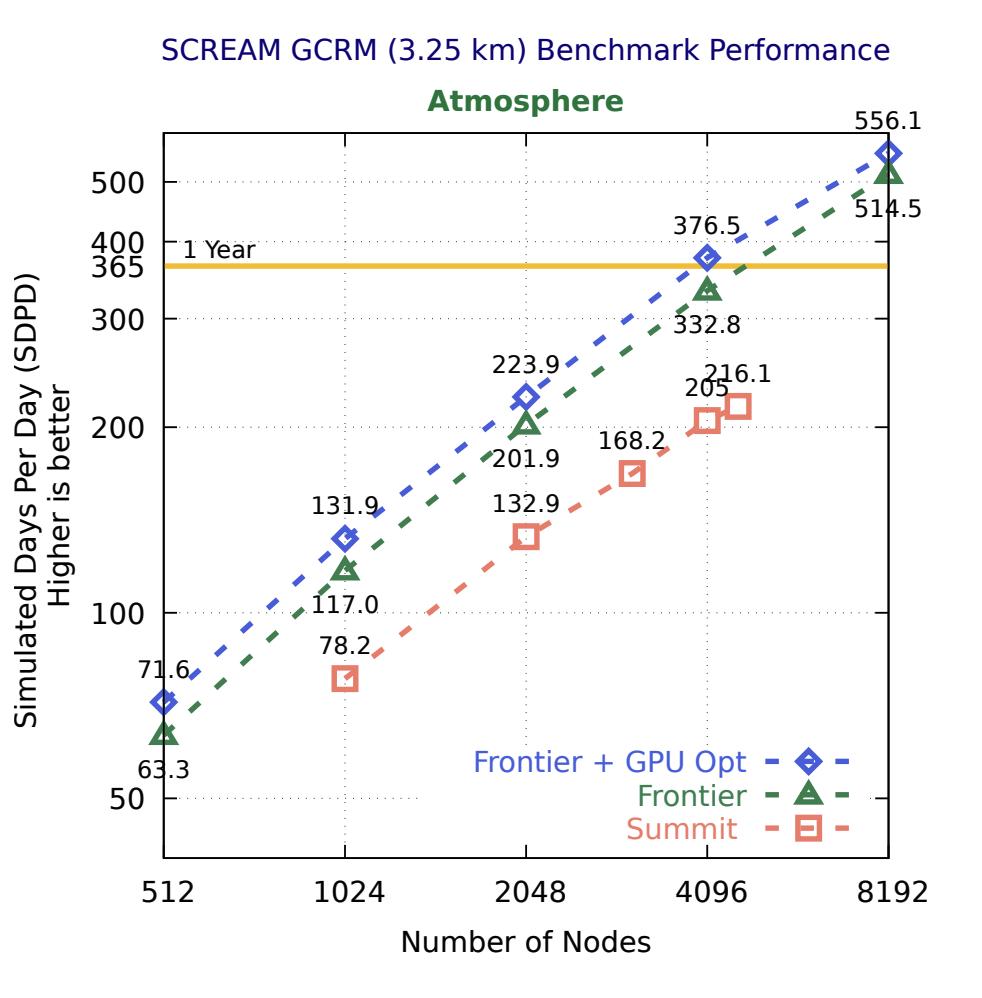Kokkos-powered Climate Simulation Code Wins the Inaugural Gordon Bell Prize for Climate Modelling
Posted on November 18, 2023 • 2 min read • 378 words
In a nutshell
At SC23, the Association for Computing Machinery (ACM), awarded the
The Simple Cloud-Resolving E3SM Atmosphere Model (SCREAM) Running on the Frontier Exascale System project
the inaugural ACM Gordon Bell Prize for Climate Modelling for their project.
SCREAM is a cloud-resolving global atmosphere model with state-of-the-art
parametrizations for microphysics, moist turbulence and radiation.
The team, composed of nineteen members from a diverse set of institutions including several national labs,
developed SCREAM in C++ from the ground up choosing Kokkos as the on-node programming model.
All the multi-dimensional fields in SCREAM are stored as Kokkos::Views, and loops
implemented using Kokkos::parallel_for constructs, specifically leveraging the TeamPolicy.
The Kokkos-based implementation enabled them to achieve on-node performance portability. SCREAM is the first such climate model to run on both AMD GPUs and NVIDIA GPUs. Moreover, complementing the Kokkos-based on-node component with the Message Passing Interface (MPI) for the inter-node communication, allowed them to run the code on (nearly) an entire Exascale system (Frontier).
The ACM Gordon Bell Prize for climate modeling aims to “recognize innovative parallel computing contributions toward solving the global climate crisis. Climate scientists and software engineers are evaluated for the award based on the performance and innovation in their computational methods.”.
SCREAM meets key science target
Quoting Mark Taylor, the leading author of the paper winning the prize, and chief computational scientist for E3SM: “We have created the first global cloud-resolving model to simulate a world’s year of climate in a day”. SCREAM achieved that throughput of one simulated year per day (SYPD) by running on nearly an entire Exascale system (Frontier).

Extracted from: https://dl.acm.org/doi/pdf/10.1145/3581784.3627044
Strong scaling results of the 3.25km-resolving configuration of SCREAM v1 without I/O. Throughput measured in simulated-days-per-day, plotted as a function of compute nodes on Frontier. The plot shows the performance based on time spent in the atmosphere component. It highlights the throughput of their baseline code on Summit (red curve) and Frontier (green curve) as well as the improvements obtained from the targeted GPU optimizations (blue curve). The yellow line shows the 1 SYPD performance target.
References
- https://www.hpcwire.com/2023/04/07/frontier-supercomputer-powers-scream-climate-model/
- “The Simple Cloud-Resolving E3SM Atmosphere Model Running on the Frontier Exascale System”, Mark Talor et al., SC ‘23: Proceedings of the International Conference for High Performance Computing, Networking, Storage and Analysis, Nov. 2023 (https://dl.acm.org/doi/10.1145/3581784.3627044)